In November 1965, extensive repair work began on a five-story stone pagoda in Wanggung-ri, Iksan, which was leaning and in danger of collapsing. While the pagoda was being dismantled and rebuilt, various types of sarira reliquaries were found hidden inside. These reliquaries were discovered in two niches in the roof stone of the first story and in three niches in the base stone of the platform.
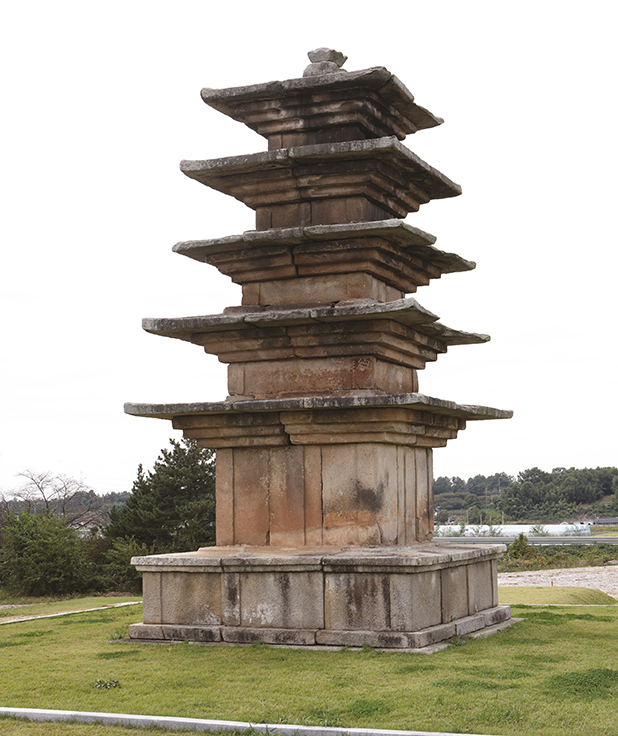
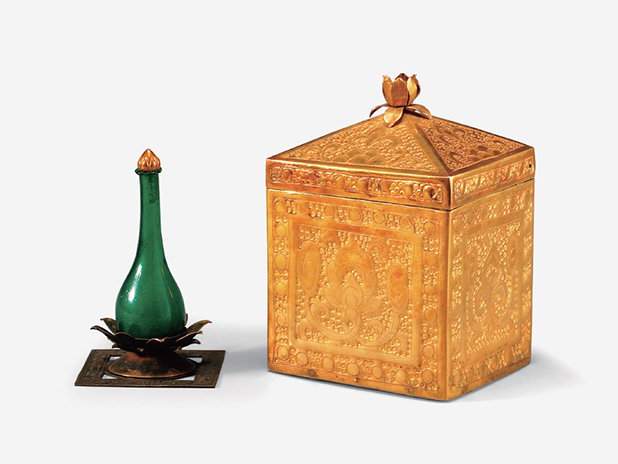
Sarira Reliquaries: Containers for Sarira
In India, the Sanskrit word “śarīra” can mean “body,” “bones,” or “remains.” Initially, this term was used specifically for the cremated remains of Sakyamuni Buddha, who first established Buddhism in India. But over time, the word “sarira” was applied more widely in reference to the remains of eminent monks or even the teachings of Sakyamuni Buddha.
After Sakyamuni Buddha died, special architectural structures were built to enshrine his cremated remains, or sarira. These structures were the first pagodas. Before being placed inside the pagodas, the sacred sarira were sealed inside beautifully decorated vessels called “sarira reliquaries.” In a broader sense, the term “sarira reliquaries” refers not only to the actual containers for the sarira, but also to various items or offerings that are involved in the ceremonies for enshrining the sarira.
Archaeological Site in Wanggung-ri: From Royal Palace to Buddhist Temples
The five-story stone pagoda was located in Wanggung-ri, Iksan, an area of great significance in the history of the Baekje Kingdom (18 BCE–660 CE). Through the course of its history, Baekje had three different capital cities. Thus, the history of Baekje is typically divided into three chapters based on the respective capital at the time: the Hanseong period (present-day Seoul, 18 BCE–475 CE); the Ungjin period (present-day Gongju, 475–538); and the Sabi period (present-day Buyeo, 538–660). During the Sabi period, under King Mu (r. 600–641), many important national buildings and facilities were constructed in Iksan, some of which rival even those in the capital of Buyeo. Examples include a royal palace in Wanggung-ri, Jeseoksa Temple, Mireuksa Temple, the Ssangneung Tombs (“twin tombs”), and Ogeumsanseong Fortress. The presence of so many notable buildings has sparked debate about whether the Baekje capital might have been moved from Buyeo to Iksan during King Mu’s reign, whether Iksan was established as a separate capital, or whether there were plans to relocate the capital to Iksan in the future.
The royal palace in Wanggung-ri, which is now an important archaeological site, was in use in the early seventh century. Thus far, thirty-three buildings have been found, which include large halls, workshops for making necessary items, a toilet equipped with flushing water, and garden and backyard facilities. To the east of the palace is the site of Jeseoksa Temple, which was reportedly established by King Mu, and to the northwest is the site of Mireuksa Temple, the largest Baekje temple. Thus, at some point between the late Baekje period and the Unified Silla period, the former site of the royal palace seems to have been transformed into a complex of Buddhist temples, with temple halls and pagodas built where the royal palace facilities had once been.
Ongoing Debate: Sarira Reliquaries from Wanggung-ri
As mentioned, various sarira reliquaries were found inside the five-story pagoda of Wanggung-ri. The reliquaries were located inside special niches that had been carved in the roof stone of the first story and in the base of the platform.
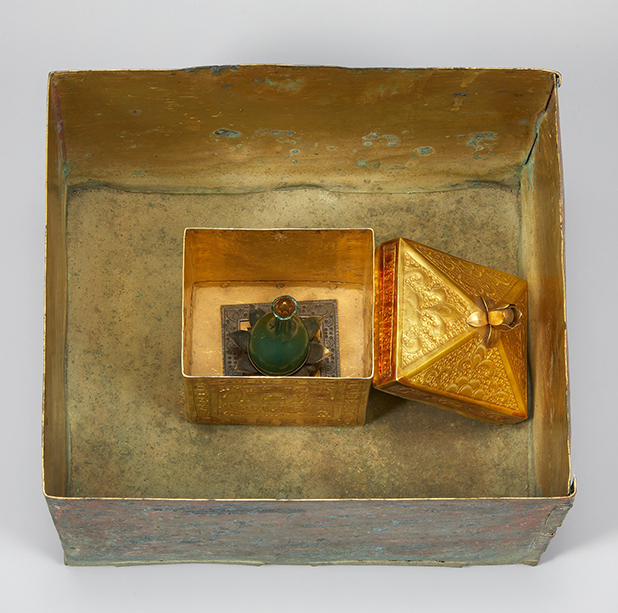
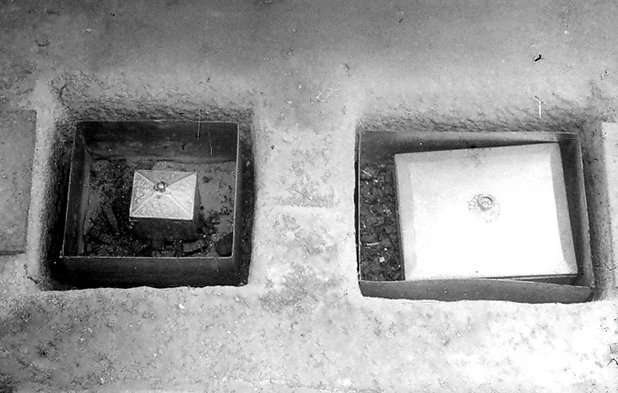
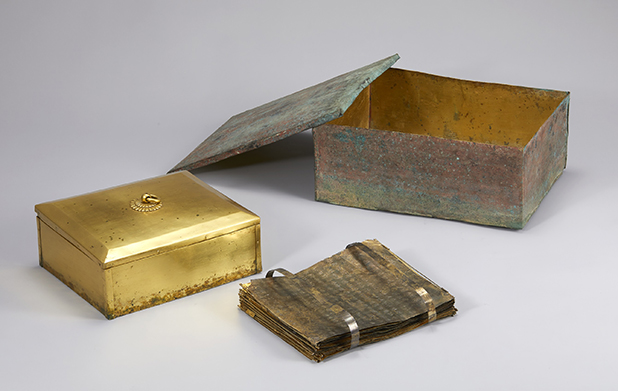
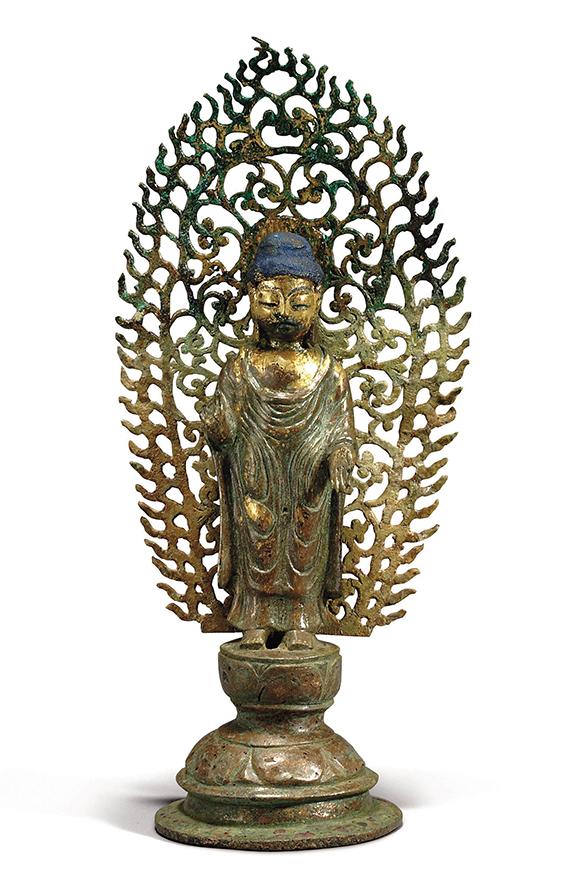
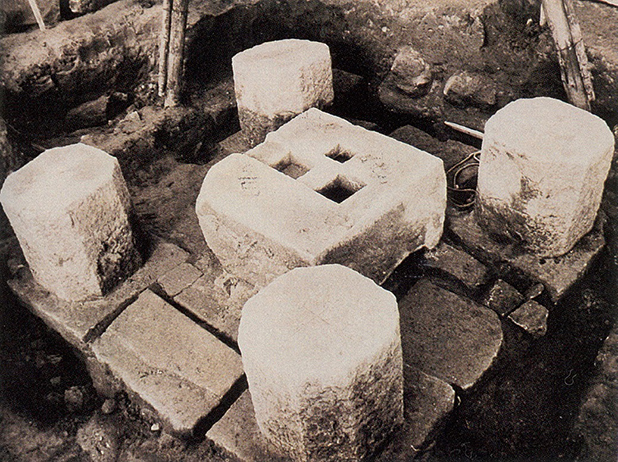
Although more than fifty years have passed since their discovery, the production date of the sarira reliquaries has yet to be confirmed. At the time of discovery, it was estimated that both the stone pagoda and the sarira reliquaries were made during the late Unified Silla to the early Goryeo period, based on the style of a gilt-bronze Buddha statue found in the platform. Later, it was proposed that they were produced in the eighth century of the Unified Silla period, based on comparison with other reliquaries from that time, such as those from the five-story brick pagoda of Songnimsa Temple in Chilgok and from the three-story stone pagoda of Bulguksa Temple in Gyeongju. But some researchers then argued that the reliquaries were more likely made during the reign of Baekje’s King Mu (i.e., early seventh century), based on similarities with contemporaneous Baekje metal crafts. In addition, the composition of the reliquaries from the first story of the pagoda is similar to a description of sarira reliquaries that were found in a wooden pagoda when Jeseoksa Temple burned in 639, as documented in Records of Avalokitesvara’s Responsive Manifestations (觀世音應驗記).
Then in 2009, during repairs to the stone pagoda at the site of Mireuksa Temple, a document entitled “Record of Sarira Enshrinement” (舍利奉迎記) was discovered. According to this document, the sarira reliquaries of the Mireuksa pagoda were enshrined by the queen of King Mu in 639. This discovery brought the sarira reliquaries from Wanggung-ri back into the spotlight. After a close comparison between the reliquaries from Mireuksa and Wanggung-ri, it was determined that they were likely produced in the same time period, based on similarities in their designs and production techniques. But given the prolonged existence and influence of Baekje culture in the Iksan area, the Wanggung-ri reliquaries could very well have been produced and enshrined at a later date.
Thus, due to limited information among extant records or artifacts, it is still difficult to confirm when and by whom the royal palace at Wanggung-ri was transformed into a temple complex, or when the five-story stone pagoda and sarira reliquaries were created. However, with the recent discoveries from the Mireuksa pagoda and the ongoing excavation of the archaeological site at Wanggung-ri, the study and discussion of these topics has intensified, bringing hope that future research will shed new light on these mysteries.






 X
X  Facebook
Facebook 
